Background
We just returned from Citi’s 2024 Global Property CEO Conference in Miami. We toured apartment, retail, hotel, and data center assets in Miami while also participating in over 45 small group and one-on-one meetings. We sat in on industry roundtable discussions and had the opportunity to speak with other REIT investors. Our key takeaways can be found below.
Big Picture Takeaways
Most Property Sectors Are Solid, Despite Negative Headlines About Commercial Real Estate
Most recent news headlines on commercial real estate (CRE) have focused almost exclusively on a looming crisis in the sector, attributed to regional banks' overexposure to non-performing office loans anchored by older, vacant Class B and C properties.
However, it’s crucial to note that traditional office spaces constitute a mere 3.5% of US Equity REITs by market cap.
In contrast, diverse property sectors catering to emerging demographic trends such as AI, e-commerce, increasing data consumption, rental housing for young families, and accommodation catering to the coming ‘silver wave’ as people live longer, more active lives are experiencing robust growth in occupancy, rental rates, and earnings.
REITs offer investors a valuable avenue to easily access quality companies specializing in niche property sectors beyond the conventional realms of office, apartment, retail, and industrial spaces typically available to private investors. While it is true that older office buildings and multifamily properties with high loan-to-value ratios and unrealistic rent growth projections may struggle to meet loan obligations, we believe the negative spotlight on these segments is overshadowing the steady growth and demand in sectors we remain focused on. These include data centers, cell towers, industrial properties, single-family rentals, and senior housing operating properties (SHOPs).
Optimism on US Economy as Interest Rates Stabilize
Compared to last year's conference, management teams exhibited a heightened sense of optimism regarding interest rates, economic outlook, and tenant prospects for 2024.
Prior to last year’s conference, the US Federal Reserve had embarked on a series of rate hikes, raising the Federal Funds rate eight times by March 2023, reaching a target range of 4.5-4.75%. Back then, there was widespread uncertainty among REIT management teams regarding the extent of further rate increases, with many anticipating a recession by the end of 2023.
Fast forward to today, with the Fed funds rate at 5.25-5.5% and the Fed presently on pause, this offers markets a greater sense of stability. This shift is starting to encourage both Wall Street and Main Street to consider investment opportunities more positively. A common sentiment this year was that average Americans and companies are either getting comfortable with the current level of interest rates or expecting slightly lower rates in the future.
Transaction Markets Gaining Momentum
We anticipate an uptick in real estate transactions for the rest of the year. CEOs noted significant increases in seller cap rate expectations, suggesting potential for appealing asset prices. With further adjustments in these expectations, REITs may discover attractive acquisition opportunities despite the current financing landscape.
Lennar, a US homebuilder, is actively marketing a portfolio of 11,000 luxury apartments developed through its subsidiary, Quarterra. Although the REITs we spoke with expressed no interest in acquiring the portfolio, it is expected to be purchased by a single buyer within a cap rate range of 5.25-5.5%. This sale would be good for the Residential sector, as it would help set a realistic comparison for private sellers who are still holding on to the notion that their properties can sell at sub-5% cap rates.
We also expect to see greater activity in the Self-Storage sector, which is heavily dependent on housing market activity during its peak summer leasing season. Self-Storage executives highlighted the two years of pent-up demand from Americans waiting to buy a home or to relocate. The potential willingness of these individuals to accept current mortgage rates, anticipating future refinancing opportunities, could serve as a tailwind not yet reflected in conservative 2024 guidance from Self-Storage REITs.
The Office asset transaction market has also seen some increased activity. In Q4 2023, Office REITs executed five joint venture (JV) transactions, three of which were with Boston Properties REIT who repurchased stakes in assets from JV partners while divesting stakes in other assets to different partners. Executives of Highwoods Properties REIT informed us that they have been selling office assets to HNW individuals and family offices, who are able to outbid institutions on these deals – the same behavior these executives saw coming out of the Great Financial Crisis.
In addition, we are seeing strong potential for increased public-to-public M&A activity. There is a wide disparity in NAV premiums/discounts between REITs, which can make these types of deals very accretive for shareholders. For example, in the first few weeks of 2024, shopping center REIT Kimco closed on its acquisition of RPT, and Blackstone announced its intention to acquire Tricon Residential at a 30% premium to its unaffected share price.
Interest Rates Choking New Supply, Becoming A Tailwind for RE Owners
Interest rates which have driven up the cost of construction financing, increased labor and material costs, along with lingering interest rate uncertainty are all combining to make development extremely difficult. Across asset classes, new construction appears to be approaching a cyclical low, as existing projects continue to be delivered with minimal new constructions underway.
Retail REITs noted that shopping center assets currently trade at a considerable discount of 30-40% below replacement costs. Consequently, new development is only deemed financially viable if market rents increase by another 40-50%. Similarly, Industrial REITs are experiencing a 75% decrease in new development starts compared to the recent peak. All sectors, except for Data Centers, are projected to see just 0-3% supply growth in coming years. This scarcity of new supply presents a significant tailwind for real estate owners and landlords as existing space is absorbed by the market.
Sector Takeaways
Data Center (Overweight)
Our discussions with Data Center (DC) management teams were predictably positive, highlighting the persistent supply-demand imbalance in the DC sector, which promises significant growth potential for years to come.
Various factors limit supply expansion across different markets. For instance, in Silicon Valley, power generation constraints imposed by the local utility delay new DC development until 2028. In Frankfurt, Germany, local government regulations confine new construction to specific zones lacking in space and desirable locations. In Northern Virginia, electricity constraints come from insufficient transmission capacity of the grid, rather than power generation capacity of the local utility. Development cost is also an important limiter, with DCs boasting the highest new construction costs of any real estate at c.USD 1,100 psf. Lastly, latency requirements have placed many tier 1 DC markets in densely populated city centers, such as downtown Chicago, where undeveloped land is extremely hard to come by.
While many of these supply constraints were previously recognized, the surge in AI demand exacerbates the situation, with one DC CEO bluntly stating, "there's not enough capital to meet all the AI demand." Hyperscalers such as Google and Oracle prefer leasing turnkey solutions from DC REITs like Digital Realty and Equinix, a core B&I holding. However, they are also resorting to leasing powered shells from private developers and non-DC REITs like Prologis due to an urgent need to fulfill requirements.
Healthcare (Overweight)
We focused on meeting with senior housing operating portfolio (SHOP) and skilled nursing facility (SNF) REITs, which cater to the housing and service needs of seniors aged 80 and older, offering amenities such as meal preparation and medical care.
The SHOP and SNF subsectors exhibit strong supply/demand fundamentals, presenting a multi-year growth opportunity with significant returns driven by an aging baby boomer population and increasing life expectancies. The current US population aged 80 and over stands at approximately 14.5m and is projected to reach nearly 20m by 2030. Despite rising demand for SHOP and SNF assets, new supply remains seriously limited with construction already slowing pre-covid following a supply glut in the late 2010s. In Q4, only 27,000 senior housing units were delivered in the US, the lowest in five years.
This looming supply/demand imbalance will lead to high pricing power for specialized companies like Welltower, Ventas, Omega, and Sabra Health Care.
We met with the Welltower team and were happy to see they remain focused on their long-term strategy of using a targeted data analytic process to identify well-located assets and purchase them at a discount to replacement value with their attractive cost of capital. Welltower executed $4.8 billion in acquisitions and loan funding in 2023, achieving 16% YoY FFO/share growth in Q4. With their expertise, strong balance sheet, and favorable cost of capital, we anticipate continued opportunistic capital deployment in 2024.
Office (Underweight)
Despite challenges facing the broader office market due to hybrid and remote working trends, REITs have seen favorable developments compared to private office property owners.
REITs benefit from the "flight to quality" trend, with leasing economics shifting in their favor. Investors may find it surprising that leasing costs, such as tenant improvement allowances, are not massively elevated for Office REITs. Management teams noted that REITs hold newer space which does not require as much capital expense to ink a deal with a new tenant. Relatedly, bank foreclosures—when they start to hit—will primarily consist of Class B and C office buildings, whereas Office REITs overwhelmingly hold Class A and even A+ properties.
Another positive development for Office REITs is a “sea change” in leasing economics specific to new development. In the current leasing environment, demand is centered on the newest, most highly-amenitized spaces, the stock of which is shrinking rapidly in the face of muted supply growth. In the past, large anchor tenants received favorable rents for moving into a new office tower. Office REITs whose land banks include parcels in attractive downtown city centers, such as Boston Properties, are now able to demand a premium to build new office towers for future anchor tenants. We view this as a positive for Office REITs completing construction of new towers in 2024 and 2025, such as Hudson Pacific Properties, which will deliver Seattle’s newest trophy tower later this month. The asset, known as Washington 1000, has garnered significant interest, with large tech companies actively touring the building.
Multiple companies also commented on the improving fundamentals in San Francisco, with increased safety and a return to in-person work translating into increases in tour activity and leasing pipelines. Technology companies, including AI firms, are growing in traditional technology hubs like San Francisco. OpenAI's recent lease of 800k sf reflects this trend.
Residential (Overweight)
According to the Federal Reserve Bank of St. Louis, the median home sales price in the US was USD 418k in Q4, marking a 27% increase since 2020 due to a shortage of affordable starter homes. This is simply too expensive for many young families, so they decide to rent instead. The two largest SFR REITs, American Homes (AMH) and Invitation Homes (INVH) have capitalized on this supply/demand imbalance with their large portfolios of rental homes in major US cities.
AMH emphasized their unique development strategy to construct purpose-built rental homes. They maintain a substantial land pipeline and expect to deliver 2,300 new rental homes annually. This pipeline delivers steady, organic growth to their portfolio, especially during frozen transaction markets. Their portfolio is 96% occupied and seeing healthy rent growth of 5.5%.
The picture in US apartments is not as bright, especially in the Sunbelt. Companies like Mid America Apartments and Camden Property Trust are experiencing falling occupancy and negative rental growth amidst excessive supply. One veteran apartment CEO told us candidly this was the worst oversupply situation he’d seen since 1986.
There were many questions about when apartment supply will peak. While most expect it around mid-2024, stabilization will typically take another 12 months. Despite these challenges, long-term prospects remain positive due to job and population growth in the Southern US. Apartment developers are scaling back new construction starts, although a supply lag persists. We monitor supply data closely and are looking for selective opportunities within the apartment space, especially as the sector looks undervalued, having fallen nearly 25% in the last two years.
Retail – Shopping Center (Neutral)
Many themes that have been headwinds for most Office REITs present as tailwinds for Shopping Center REITs: work from home, migration to suburbs, and migration to the sunbelt. Solid re-leasing spreads and limited new supply further bolster their position. Philips Edison REIT told us that new development would only be viable once market rents rise another 40-50%.
Additionally, e-commerce works in favor of SC REITs, as retailers leverage the "halo effect" of physical stores boosting local online sales by 10%. Retailers continue to open brick-and-mortar locations to harness this effect and to serve as last-mile distribution hubs, as evidenced by Target’s recent announcement that it will add 300 new locations over the next decade.
Self-Storage (Overweight)
2024 REIT guidance was generally conservative across the board, but Self-Storage REITs took it one step further by providing wider guidance ranges than in the past. The uncertainty comes from a lack of clarity around housing activity this year. Storage is a seasonal business that sees increased activity in the summer months, which comes from housing moves. Many homeowners are “locked in” to low mortgage rates, and unwilling to move. Last summer saw a very muted pickup in self-storage activity relative to the rest of the year.
If housing market activity this year mirrors 2023, Self-Storage REITs may report results in the lower end of their guidance ranges. However, significant life events such as marriage, divorce, and death—key demand drivers for the industry—are not influenced by interest rates. Additionally, many Americans who have delayed buying a home or relocating, may decide to act now if they believe they can refinance at lower rates in 2025 or 2026.
Mexican Industrial Opportunities (Neutral)
During the conference, we met with three Mexican Industrial REITs, known as FIBRAs. The surge in near-shoring of light and auto manufacturing from China to Northern Mexico has fueled growth in Mexican Industrial properties along the US border and in the Bajío region north of Mexico City. FIBRAs informed us they are seeing unprecedented demand, with a potential mark-to-market opportunity of around 20%.
Our most notable meeting was with Vesta, whose core focus on industrial development aligns well with Mexico's current economic environment. They showcased properties in Monterrey and Mexico City, developed at an 11% yield on cost, quickly stabilized with large manufacturing tenants in 10-year USD-denominated leases, that could now be sold at a 7% cap rate. Similar low double-digit development yields on cost were consistently cited by other FIBRAs.
We spoke with Vesta's young CEO, who aims to capture the high demand for Mexican industrial properties by expanding the portfolio by 44% in the next two years. Despite strong demand, particularly in the north, infrastructure barriers like access to power and water should mitigate oversupply threats, ensuring market stability.
Asset Tour Pictures
Highwoods Properties (HIW) Office Building, Fort Lauderdale, FL – 1 March 2024
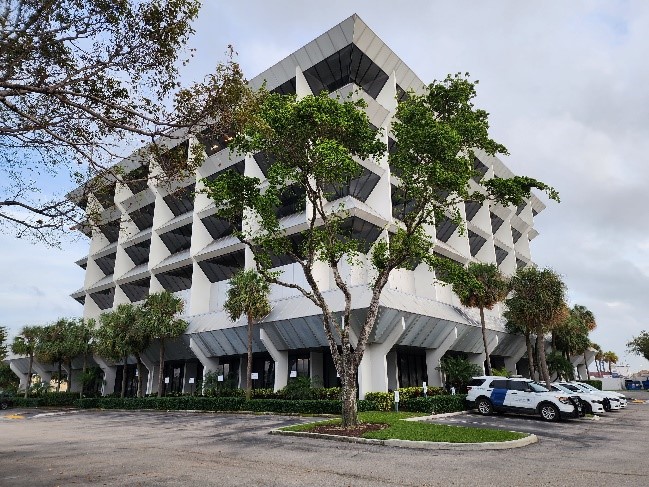 | 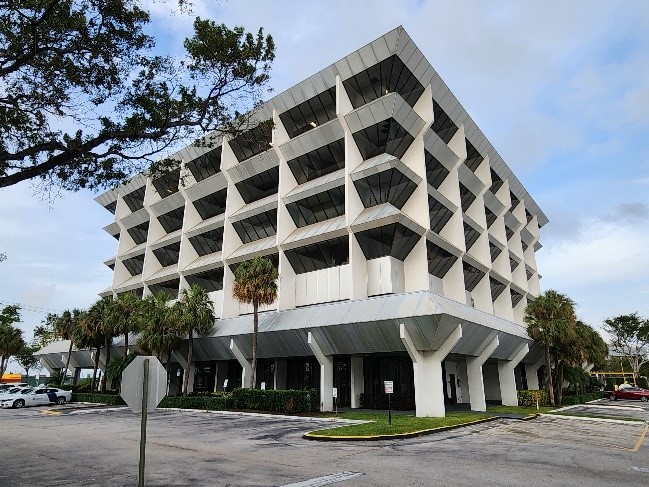 |
Simon Property Group (SPG) Aventura Mall, Hollywood, FL – 1 March 2024
 |  |
Apartment Investment & Management Co. (AIV), Hollywood, FL – 3 March 2024
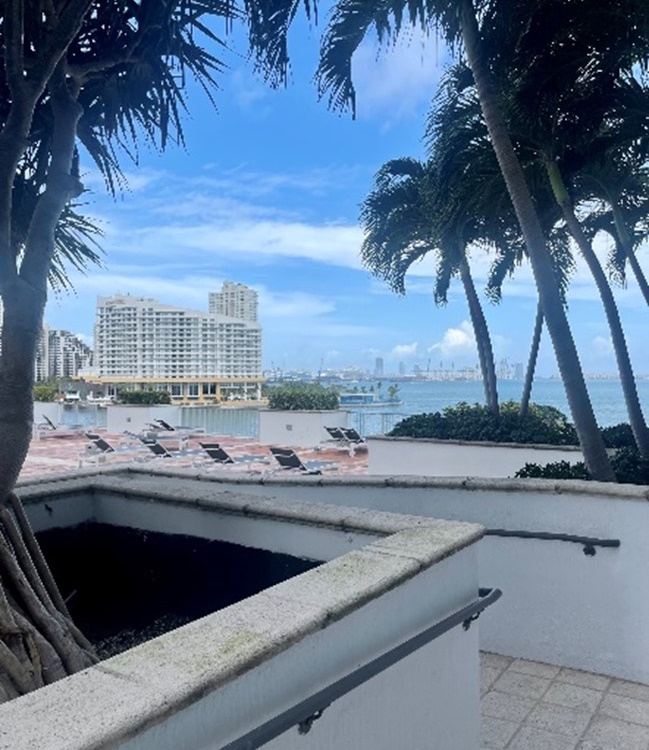 | 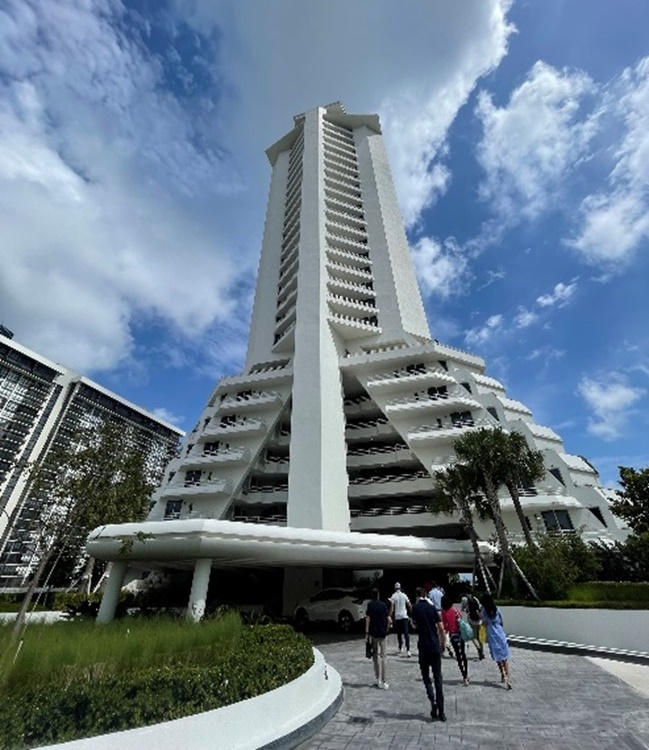 |
Sunstone Hotel Investors (SHO) Tour, Miami, FL – 3 March 2024
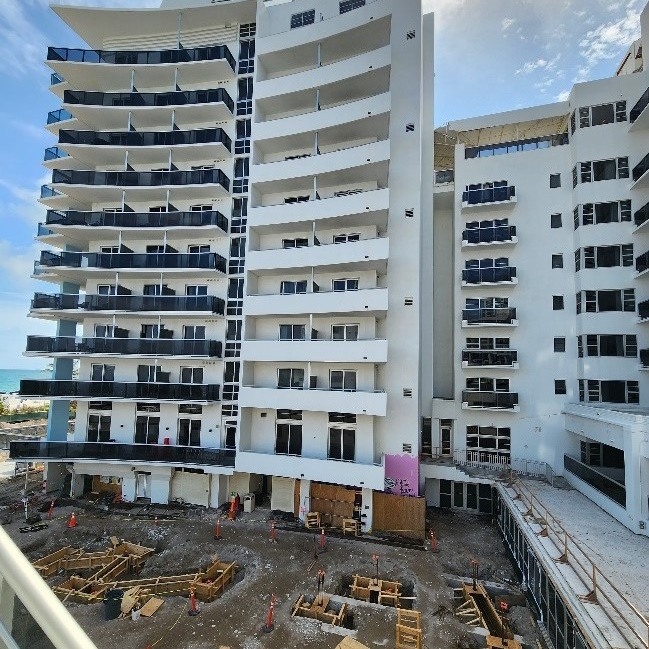 | 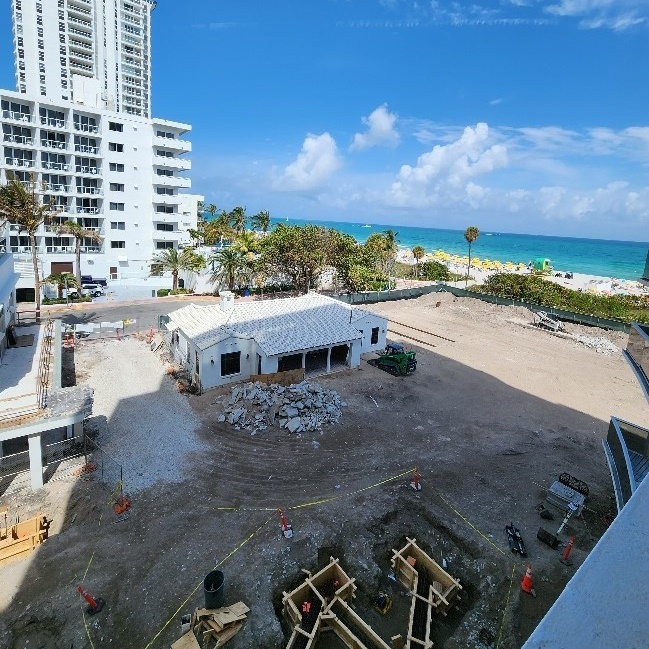 |
RLJ Lodging Trust (RLJ) Tour, Miami, FL – 3 March 2024
 |  |
Equinix (EQIX) MI1 Data Center Tour Miami, FL – 7 March 2024 *
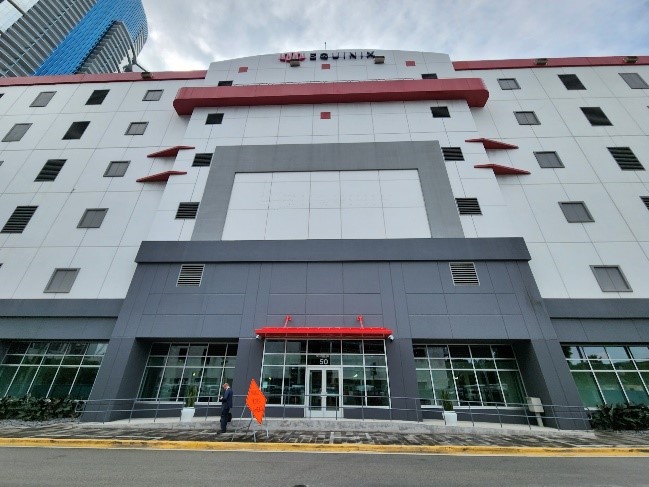 |  |
*Not permitted to take pictures of operating areas
Download the PDF version of the report here
